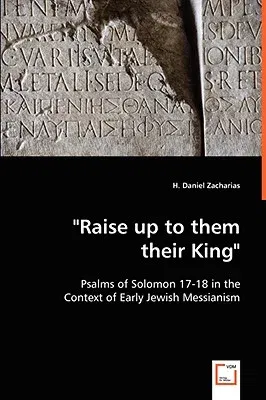H Daniel Zacharias
(Author)Raise up to them their King - Psalms of Solomon 17-18 in the Context of Early Jewish MessianismPaperback, 18 July 2008

Qty
1
Turbo
Ships in 2 - 3 days
In Stock
Free Delivery
Cash on Delivery
15 Days
Free Returns
Secure Checkout
Print Length
108 pages
Language
English
Publisher
VDM Verlag Dr. Mueller E.K.
Date Published
18 Jul 2008
ISBN-10
3639060768
ISBN-13
9783639060768
Description
Product Details
Author:
Book Format:
Paperback
Country of Origin:
US
Date Published:
18 July 2008
Dimensions:
22.86 x
15.24 x
0.56 cm
Genre:
Jewish
ISBN-10:
3639060768
ISBN-13:
9783639060768
Language:
English
Location:
Saarbrucken
Pages:
108
Publisher:
Weight:
154.22 gm

